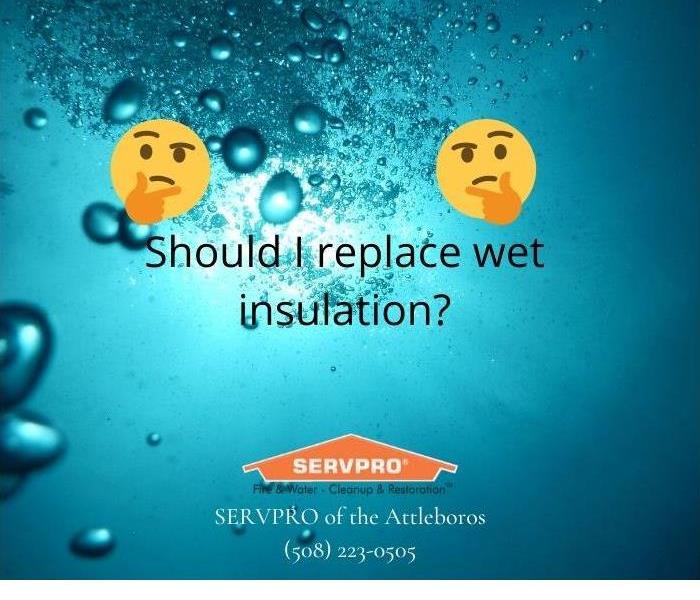Wet Insulation after a roof leak in Seekonk MA 02703
6/23/2020 (Permalink)
When your roof leaks, oftentimes the insulation is one of the first things to experience some damage.
There are two types of insulation that are the most common:
- fiberglass
- blown in loose full
When insulation gets wet, it lowers its performance. As soon as insulation gets wet, it loses at least 40% of its insulating R value.
Another issue you may run into is mold growth in your insulation. With fiberglass insulation, typically the paper backing will be where you can find most mold growing following a water loss. According to this article, cellulose insulation that is treated with a fire resistant helps to make it a little more water resistant than insulation that is not treated. Of course, it is not fully waterproof. Insulation typically acts like a sponge when introduced to water. It will just suck up the water/moisture and then transfer it to the wood or structures behind it or underneath.
Can wet insulation be saved?
The question is not 'can' it be saved, the question is should it be saved.
Some pros would argue that you shouldn't dry and re-use insulation after water damage. There are two main reasons why you shouldn't re-use insulation.
1: The insulation gets compressed after water damage, reducing its insulating R-value.
2: As stated above, mold is a great concern when insulation gets wet. Especially with cellulose insulation, it's a great host for mold when it gets wet. Mold can begin to grow in as little as 48 hours.
Replacing wet insulation is going to be less expensive in the long run, and will create a healthier environment for you to live or work in. Mold will rarely remain in one part of the house. Leaving wet (dried) insulation will allow for the mold to migrate to other areas of the home/building.
If you suffer from water damage in your Attleboro home or business, give us a call at (508) 223-0505, we're here to help!!





 24/7 Emergency Service
24/7 Emergency Service
